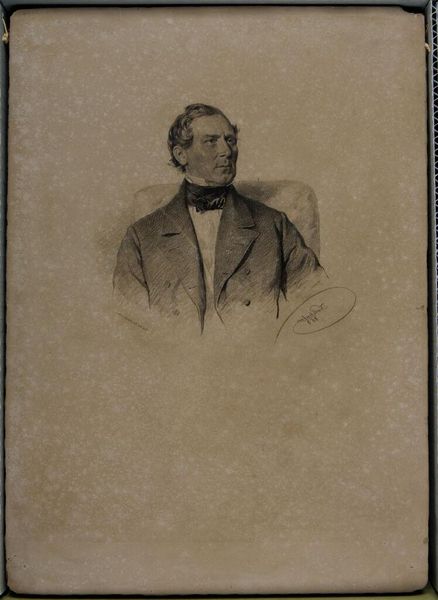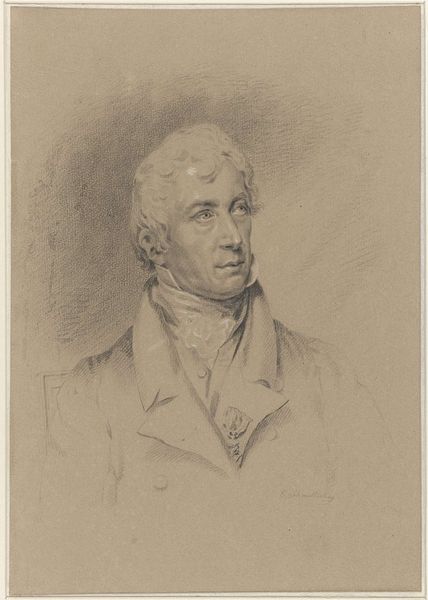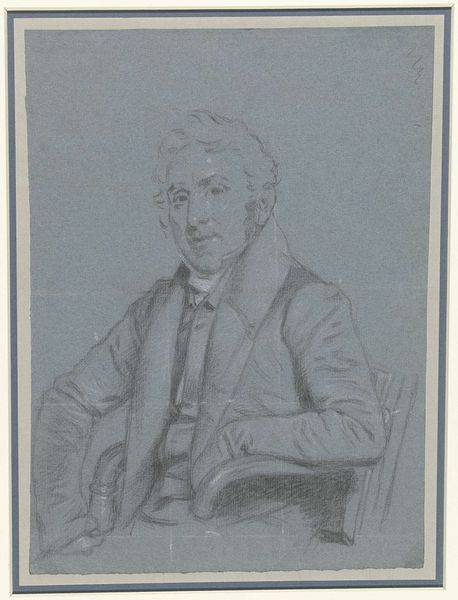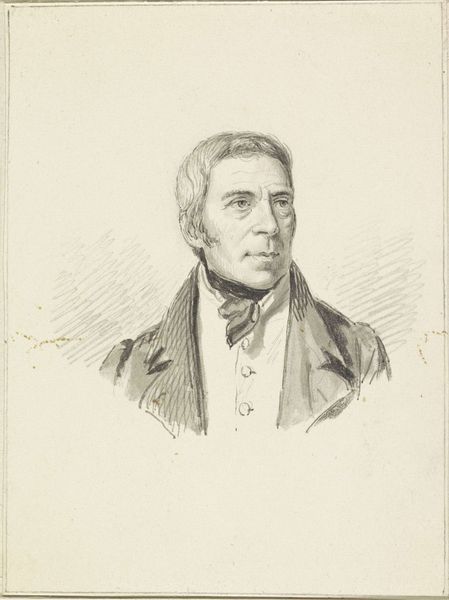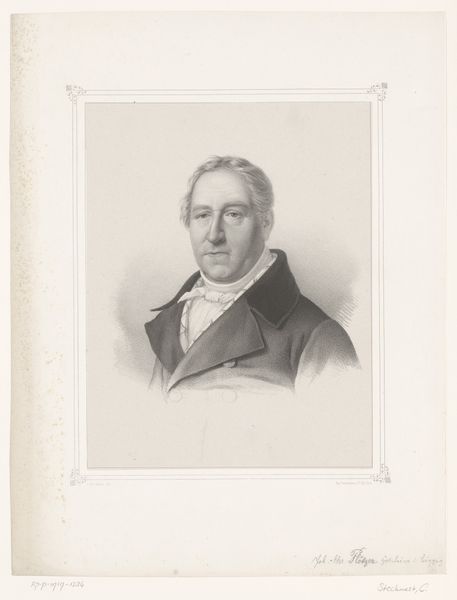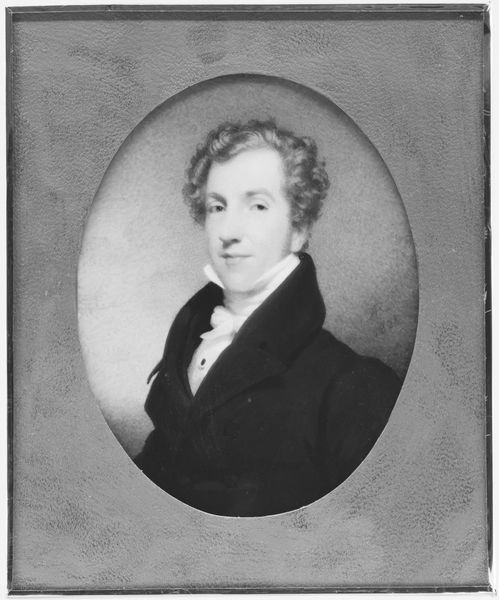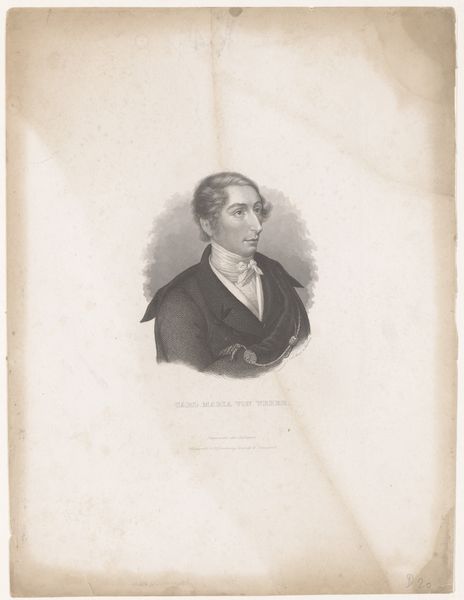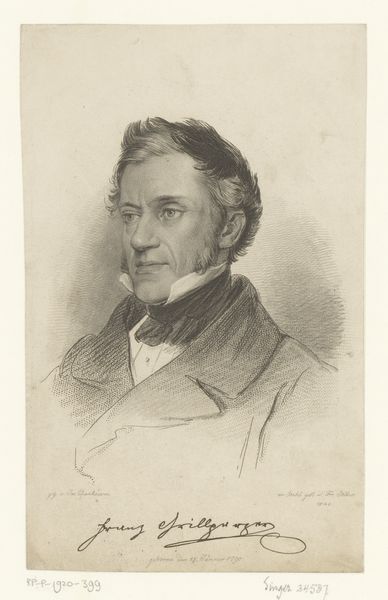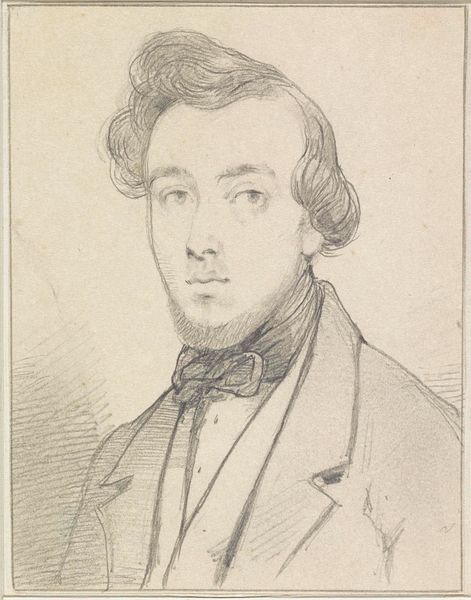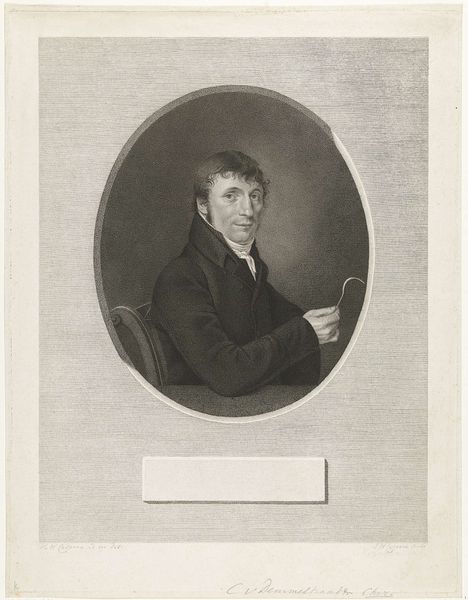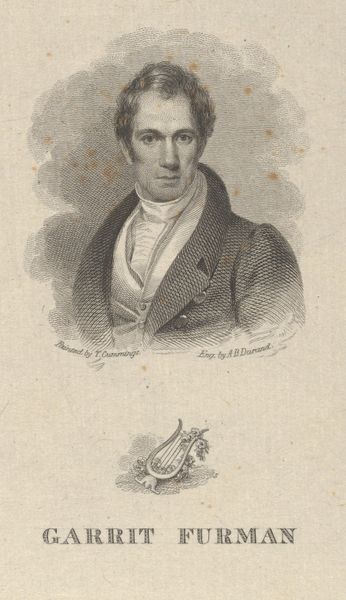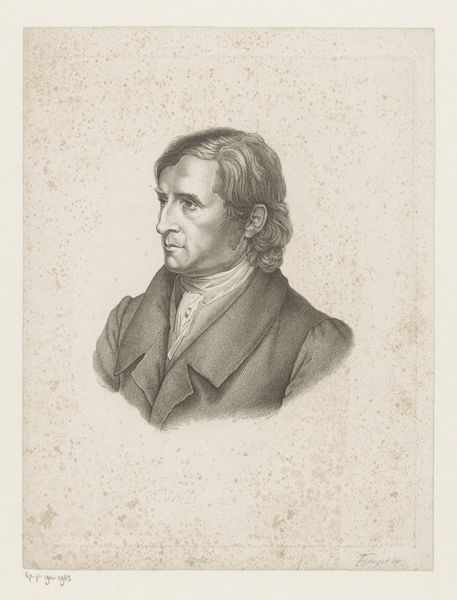
Portrait of a Man (from McGuire Scrapbook) 1751 - 1851
0:00
0:00
drawing, pencil, graphite
#
portrait
#
pencil drawn
#
drawing
#
pencil sketch
#
figuration
#
romanticism
#
pencil
#
19th century
#
men
#
graphite
#
portrait drawing
Dimensions: 5 3/16 x 5 11/16 in. (13.2 x 14.4 cm)
Copyright: Public Domain
Curator: Here we have an unassuming yet intriguing pencil drawing from the McGuire Scrapbook. It's a "Portrait of a Man," dated rather broadly to 1751-1851, now residing here at the Metropolitan Museum. What's your immediate impression? Editor: Austere. There's a distinct lack of embellishment. The grayscale lends a somber, almost spectral quality to the figure, doesn't it? One is invited to think of history. Curator: Precisely! Pencil portraits such as these flourished with Romanticism; there was interest in representing the interiority of subjects. Notice how the light gently models the subject’s face? We see those tell-tale locks, a signifier of masculinity then. A visible cultural ideal. Editor: I'm wondering about the social context. The man seems formally dressed – certainly of a certain standing. Was portraiture of this kind, at that time, used to solidify identity, power, and class? Is the lack of flamboyance maybe intended to denote ‘serious’ purpose? Curator: Good questions. It likely reflects a rising middle class who wanted their likeness captured. As for the style, think about what symbols or objects have been omitted: status markers of aristocracy, flamboyant garments, or emblems of power. Instead, the artist offers just the face itself – direct engagement is implied with the viewer. Editor: It strikes me how 'unfinished' the piece looks. Not in a negative way, but its ‘work-in-progress’ style invites speculation about its status: Was this study intended as part of a larger project? Also, how do the museum context and presentation alter the meaning of something so modest? Curator: Indeed. Think of it as a window into the aspirations of an era grappling with new notions of selfhood and social mobility. This small drawing then becomes monumental for what it shows about evolving perceptions. Editor: An intriguing piece. It makes me reflect upon the changing public faces of identity, and what persists.
Comments
No comments
Be the first to comment and join the conversation on the ultimate creative platform.
